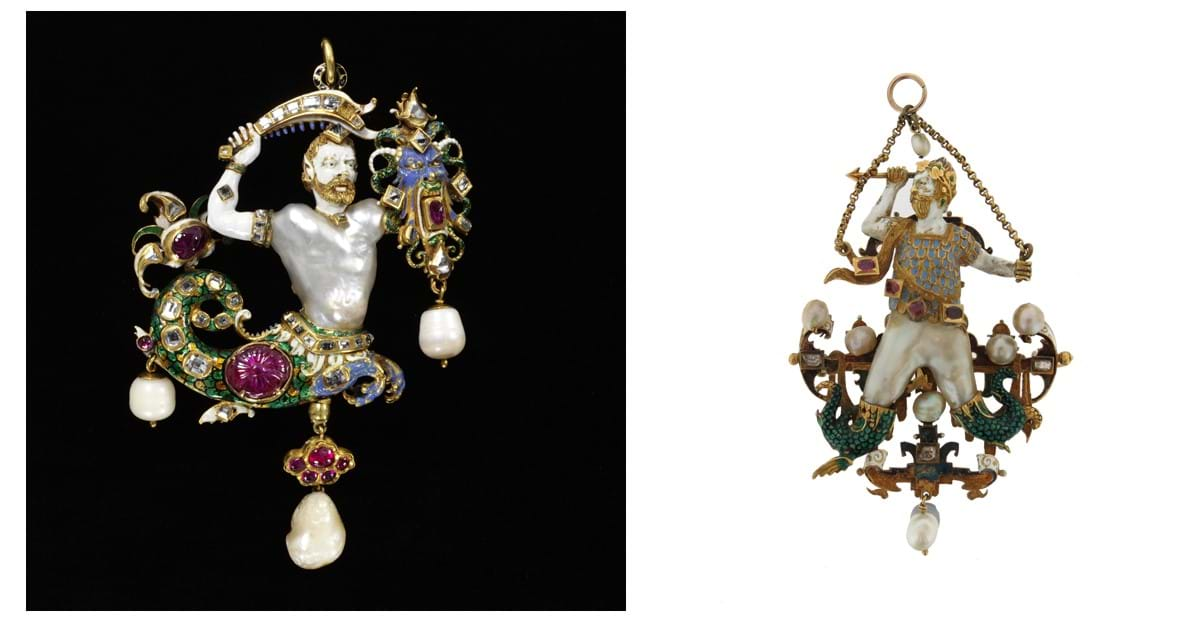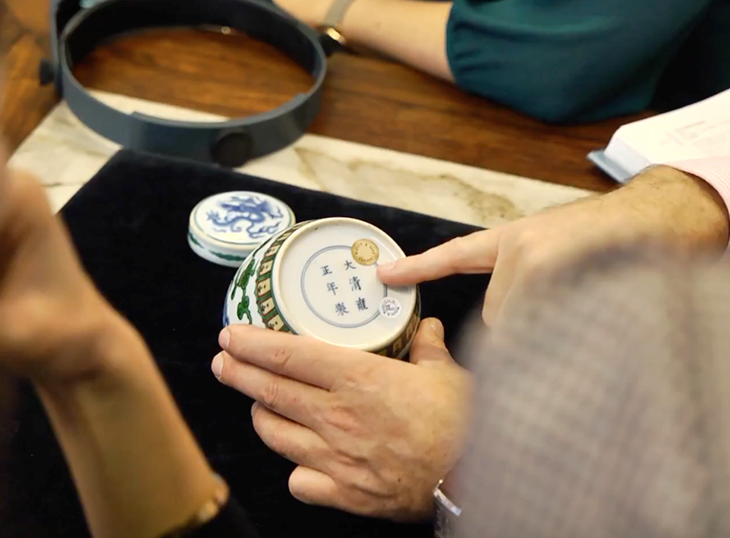Baroque Pendant with a Chequered Past
14th April 2019The Canning Jewel was one of the most priceless treasures of the Victoria and Albert Museum, gifted to it in 1931 by an anonymous American donor who later revealed herself to be Mrs Edward S Harkness of Conneticut.
The baroque pearl pendant in the form of a merman had been acquired from Sotheby’s from the collection of the 6th Earl of Harewood, and had a verbal provenance that traced it back to the House of Medici in Florence via the Moghul Emperors of India, and the Earl of Canning. The latter gave the jewel its name when he bought it from the Indian Government following the Indian Mutiny, along with other pieces he is supposed to have selected for Queen Victoria herself.
Mrs Harkness had paid £10,000 for the jewel at auction – the equivalent of £620,000 at today’s prices, and Sotheby’s had claimed in the catalogue that “it may be doubted whether an example of comparable quality and interest nowadays exists in public or private ownership anywhere”.
Over the next fifty years the jewel was to appear in many significant publications, held up as a masterpiece of Renaissance jewellery – but doubts were setting in regarding the settings and cutting of the precious stones surrounding the central pearl, and in 1991 the V&A recatalogued the pendant as having been made in the mid 19th century. Uncertainty remains, however, and the current cataloguing suggests the jewel is “probably 19th century”.
Alongside this piece with such a complex history has emerged a very similar jewel that is being sold at Woolley and Wallis in Salisbury on 18th April. Unlike the later copies of the Canning Jewel that followed its donation to the V&A, this pendant appears to be contemporary with the museum’s pendant and depicts Porphyrion, King of the Greek Gigantes. Similarly centred around a baroque pearl, the gold setting features a ruby sash, further blister pearls and delicate enamelling to detail his clothing and features.
Like its more famous cousin, this pendant was once thought to be 16th century in date and was only recently reattributed to the Victorian era. Similarly, a toothpick in the British Museum that had been bequeathed by the Rothschild family, has had questions raised over its authenticity, while a pendant of Neptune in the collection of the Metropolitan Museum currently retains its Renaissance attribution.
Marielle Whiting is Head of Jewellery at Woolley and Wallis and has estimated the jewel according to its current attribution. She says, “So few true Renaissance pieces of this quality are known that it is no surprise that it took 60 years for the Canning Jewel to be reattributed, and this pendant has suffered a similar history. Regardless of that, they are jewels of fine workmanship and design which would grace any collection, and despite their attribution they stand strong in the historical timeline of significantt jewellery”.
The pendant will be auctioned on 18th April with a guide price of £4,000-6,000.



